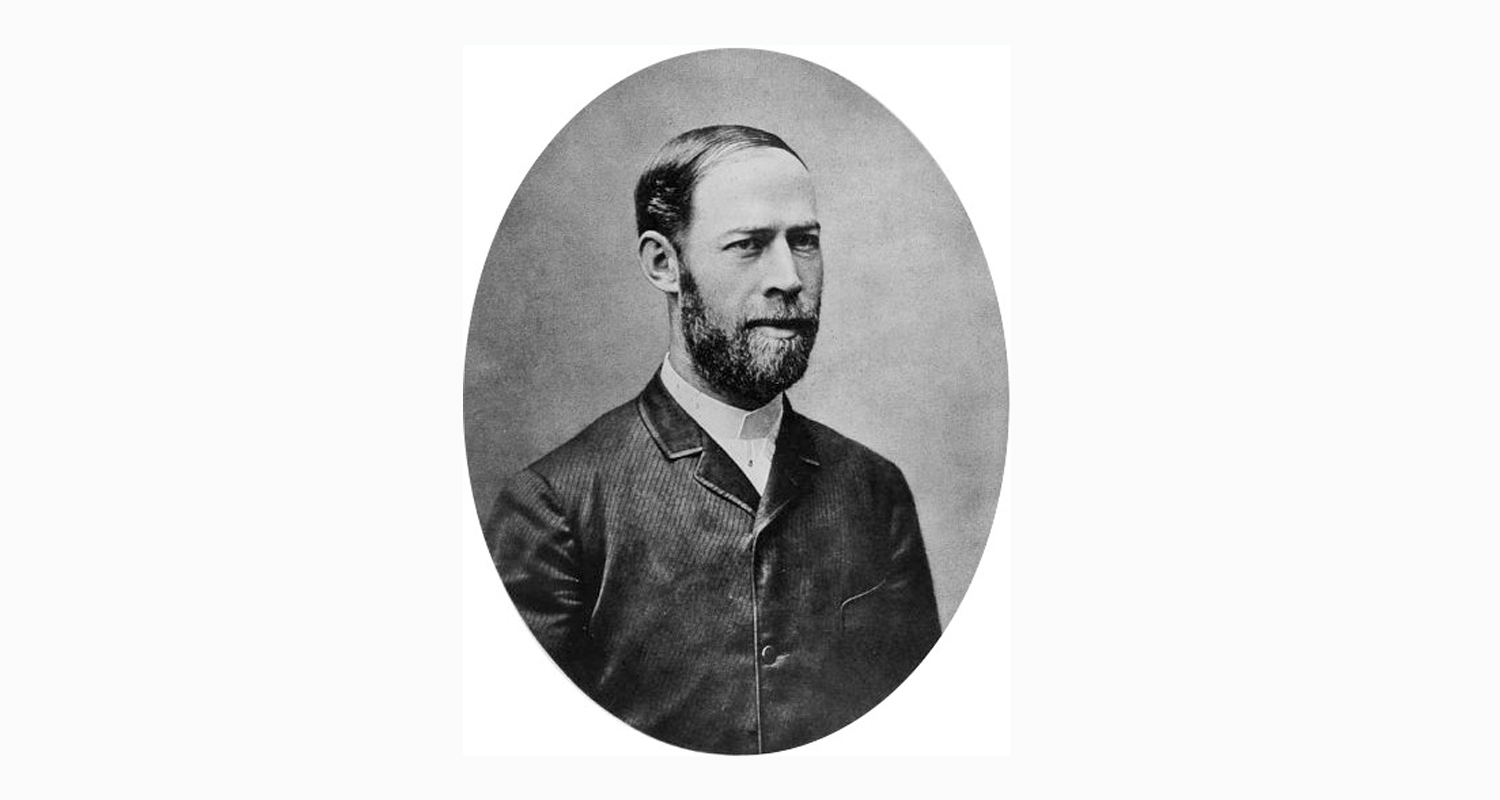The man behind the measurement
Anyone who reads the technical data for loudspeakers will come across values given in hertz (Hz) and kilohertz (kHz). This is how manufacturers indicate a loudspeaker’s frequency range. The ideal system would have a 20/20 range – 20Hz and up to 20 kHz which corresponds to what a young, healthy adult can hear (sadly, our ability to hear the upper frequencies diminishes with age).
Pretty neat that we can nail down numbers like this and then make purchases based on clearly defined specs, and there’s one man who deserves the credit for making this a reality: Heinrich Hertz. Before his hard work and ingenuity, Hertz was merely a last name and no one had the slightest idea as to the scientific underpinnings responsible for differences in pitch.
Heinrich Hertz was born in 1857 to a wealthy family in Hamburg in what was then the German Confederation. In 1880, Hertz received his PhD from the University of Berlin and went on to become a professor of physics in Karlsruhe and Bonn.
Hertz was also involved in research with particular interest in the English scientist James Clerk Maxwell’s theory regarding the interaction between electric and magnetic fields. While static on their own, Maxwell belived they could come together to create something dynamic.
James Clerk Maxwell lays the foundation
In 1865, Maxwell published the paper “A Dynamic Theory of the Electromagnetic Field” positing that when electric and magnetic fields converged they took the form of waves moving through space at the speed of light; and further, that light was, in fact, an expression of electromagnetic waves occurring at a specific wavelength. Maxwell also predicted the existence of radio waves.
Maxwell’s paper presented many complex mathematical formulas supporting his theories, but there were two problems: There was as yet no experimental proof and – more worryingly – no one seemed to understand it!
Hertz opens the door to the practical application of electromagnetic fields
Enter Heinrich Hertz. In 1886, Hertz succeeded in constructing a device that could prove the existence of electromagnetic waves and was even able to determine their varying lengths. In later experiments, Hertz managed to measure the velocity of electromagnetic radiation and discovered it to be the same as the speed of light, as Maxwell expected. By elucidating these and other qualities of electromagnetic waves, Hertz opened the door to research into electromagnetism leading to its practical application in telegraphs, radios, televisions, and, of course, loudspeakers.
In loudspeakers, electromagnetism is used to generate sound that corresponds to the electric charge fed to the system as alternating current. This is the audio signal, an electrical image of the accoustic waveform. When the audio signal is passed through the voice coil, it both creates an electromagnetic field and causes the direction of this field to change rapidly. This in turn makes the coil vibrate with a frequency and intensity determined by the audiosignal. When amplified by a cone, the vibrations create sound waves.
While generated by an electromagnetic field in a loudspeaker, sound does not consist of electromagnetic waves, traveling, as it does, much slower than the speed of light and requiring air as a medium to move. Yet like electromagnetic waves, sound occurs as a series of sine waves, or oscillations with a waveform that can be defined as a sine curve, and so the same measure of frequency – the hertz – can be applied.
Audiophiles can therefore be doubly grateful to Heinrich Hertz: He pointed the way towards the practical applications of electromagnet fields and gave us a way to measure one of the most important aspects of sound.
Describing a wave: Frequency, amplitude and phase
Of course, there’s much more to sound than just the frequency of sine waves. The amplitude of the waves is important for volume and the shape of the waves, or phase, gives sound its unique tonal colour. Yet all of these things are characteristics of the sine wave structure that Heinrich Hertz proved existed.
120 years this January
In 1930, International Electrotechnical Commission (IEC) honored Heinrich Hertz by naming the unit used to measure frequency (one sine wave cycle per second) the Hertz. Tragically, however, Hertz died in 1894 at just 36 years of age – 120 years ago this January.
Title picture: Photograph of physicist Heinrich Hertz, Practical Physics, Millikan and Gale, 1920, scanned by B. Crowell, Public Domain




